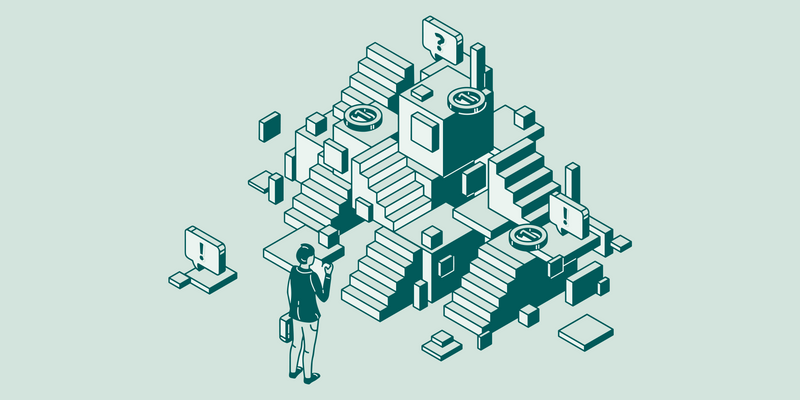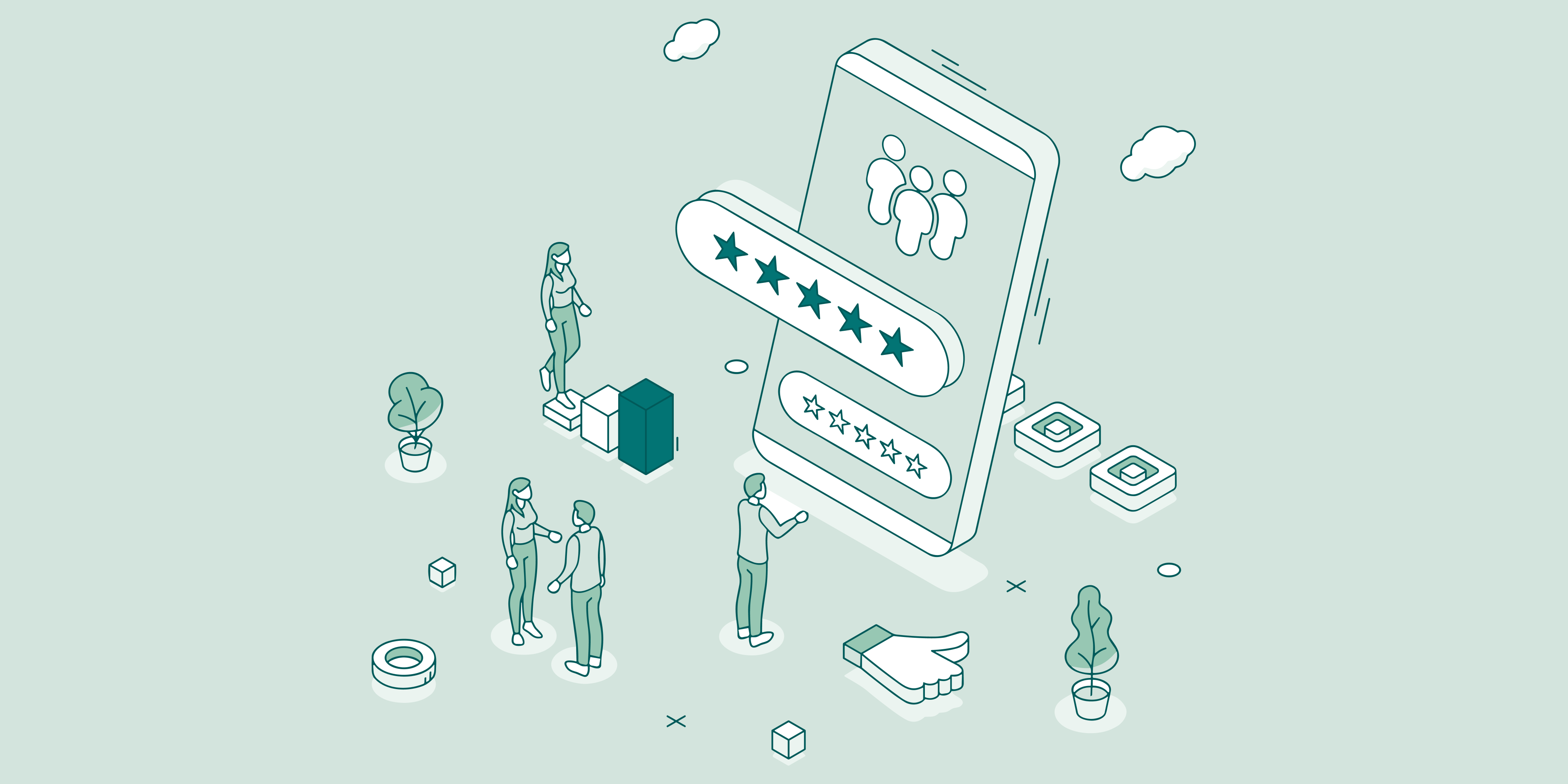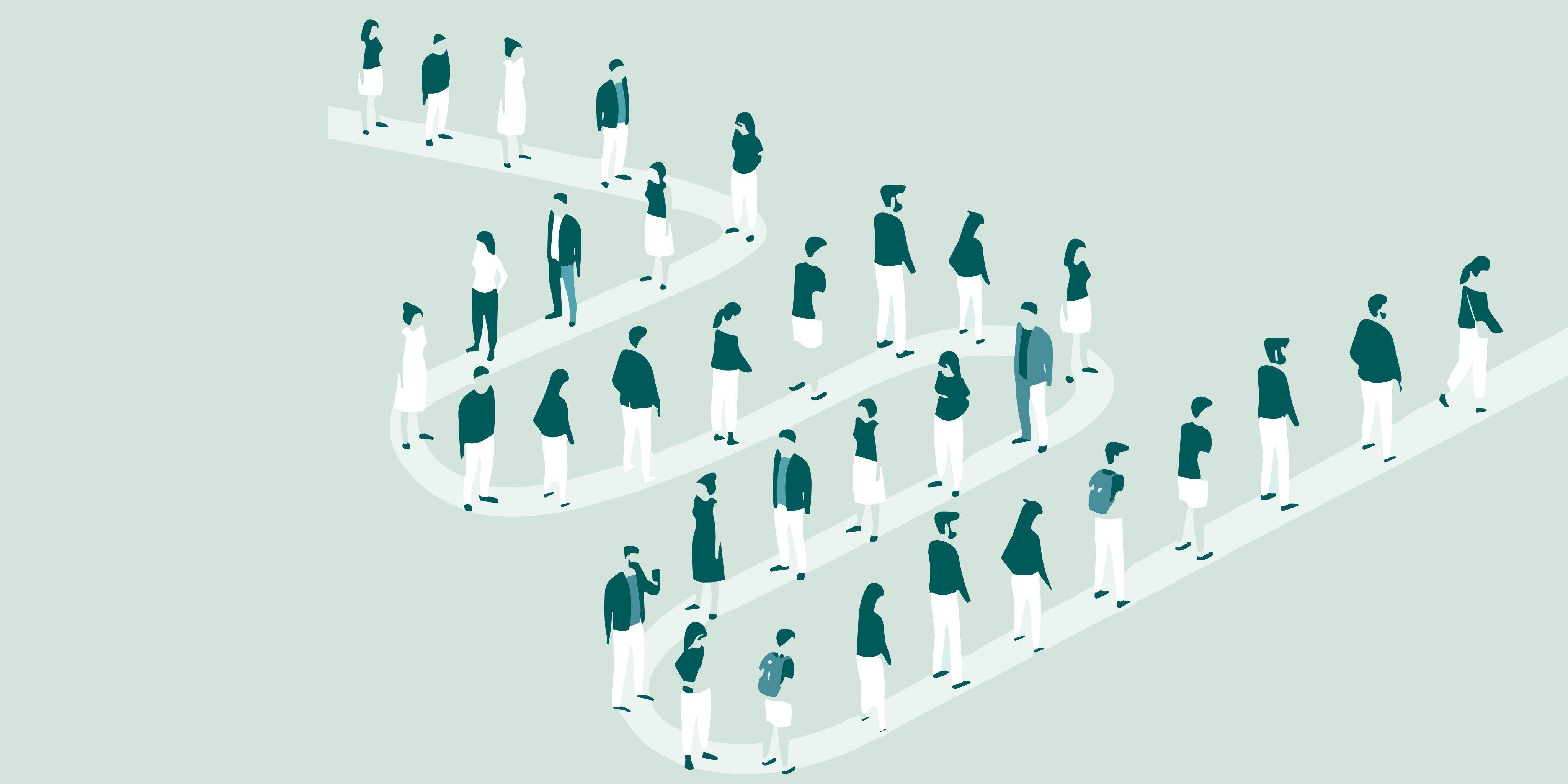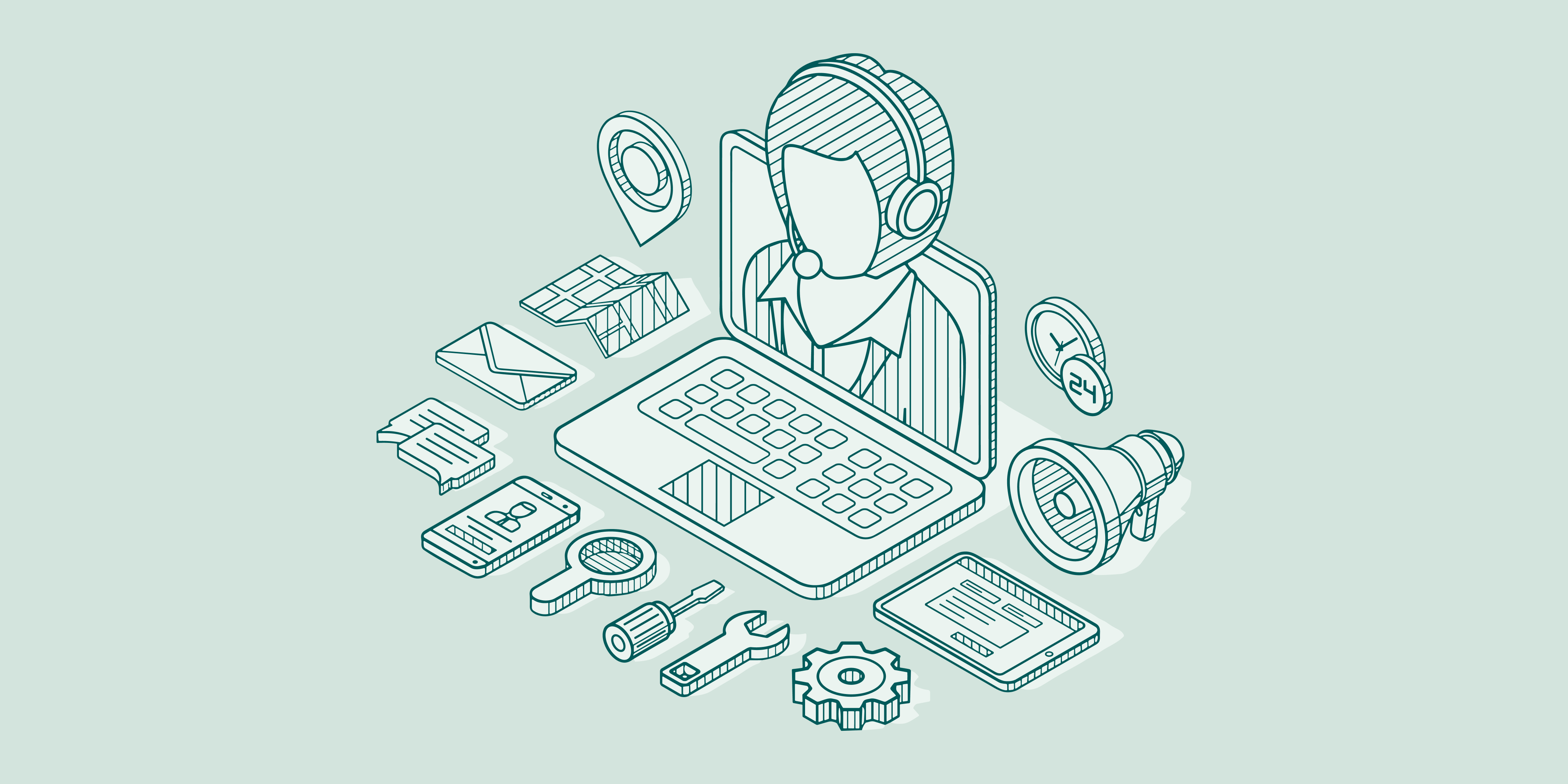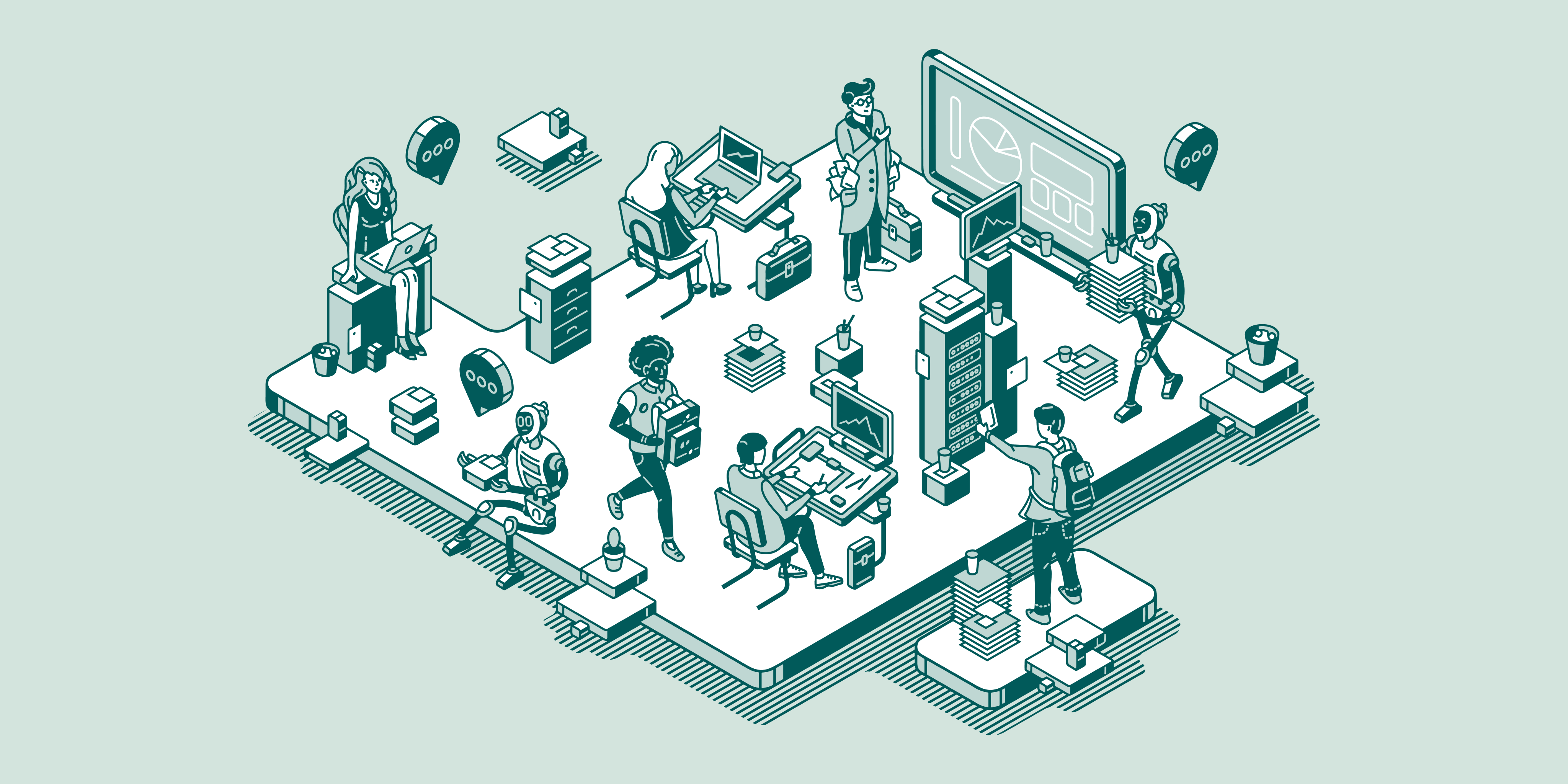Every government agency wants to enhance the citizen experience, but achieving this takes time and effort.
There are many moving parts which can be tricky to master. What components must your CX strategy have? What challenges do you face, and how can you overcome them?
If you are looking for practical answers to these and other questions, you've come to the right place. We'll explore why CX matters in government and how to overcome challenges to boost your chances of success.
Modern technology can help you achieve holistic government citizen service. Our Qminder tool helps you manage visitors, collect citizen and employee data, and analyze this data to make informed decisions.
We can even manage your physical and remote queues to help you reduce wait times by half across all your locations! Request a demo at your convenience to watch our tool in action at your agency.
What Is Government Customer Experience (CX) And Why Does It Matter?
Government customer experience is the citizens' perception of and overall satisfaction with interactions with government services and staff.
The entire process involves how people access, use, and interact with government services, how efficient and effective the services are, and how pleased they are with the interactions.
As such, citizen experience depends on factors such as the quality of customer care, the speed of service delivery, and the ease of accessing information.
Good CX in government matters for the following two major reasons:
Improving Citizens’ Quality of Life: For the citizen, good CX can mean spending less time seeking government services, solving a pressing need, and getting substantial information to support a decision. The overall effect is that the citizen’s quality of life is improved.
Improving Outcomes for Governments: As government agencies work to deliver quality outcomes for citizens, they also deliver the same for themselves. For example, good CX can help an agency mitigate risks like widespread distrust in its services or leadership.
Benefits of Enhancing Customer Experience in Government
Examining and improving your citizen service experience brings both short-term and long-term benefits to your agency. Here are just a few:
Renewed Trust in Government
Generally, 59% of American citizens say they trust the government. You can change how citizens view your agency and the government at large. Show them that you are committed to improving your services so they can see you care about their needs.
Citizens can begin to trust the government more, and they'll start to seek your services with a changed mindset towards a holistic experience for both them and your staff.
Time Freed Up for More Pressing Issues
Automation can free up time for government staff once you reduce manual, mundane, time-consuming, and repetitive tasks.
The time they free up can be dedicated to other, more significant issues, such as finding and implementing solutions to complex problems.
All-Round Satisfaction
You can also enjoy the added benefit of a more motivated workforce. Government workers can enjoy their work more because technology improves employee experience, boosting job satisfaction and employee happiness.
The happiness effect can trickle down to your citizens because happy employees make happy citizens.
Essential Elements of an Effective Government CX Strategy
The government identifies five elements of an effective citizen experience strategy, namely:
1. Measurement
Government organizations at all levels are required to define and institute ways of measuring CX outcomes and service operational efficiency.
The goal is to ensure the organizations become more accountable for improving citizen service delivery and communicating their performance internally and to the public.
Each organization must routinely analyze and use the data it gets from these regular measurements to see how to improve its services and citizenship experience.
2. Culture and Organization
The government requires all agencies to acquire and develop the talent needed to integrate and enhance citizen experience within their activities.
Agencies must empower their employees to adopt a holistic citizen experience through measuring performance, rewarding exceptionality, and training employees in customer service.
3. Service Design and Improvement
The government proposes that agencies adopt a citizen-centered approach to implement services.
The twist here is that the government proposes engaging and involving both external customers (citizens seeking services) and internal customers (such as agency staff) in gathering feedback for iterative development.
Each agency is also required to design and build digital services and products, adopt best practices to improve interactions and share the lessons it learns across the government.
4. Governance and Strategy
All agencies are required to institutionalize CX by identifying the executives and leaders responsible for dispensing and improving the citizen experience.
These leaders must organize supporting resources, ensure organization decisions align with CX strategy, and define how strategic decisions will integrate citizens’ perspectives.
5. Understanding the Citizen
The government proposes that all agencies must understand the citizen service journey deeply through various ways:
Collaborative Research to Map Citizen Service Journeys: Agencies can identify situations where the public interacts with federal services and conduct quantitative and qualitative research across organizations to outline citizens’ service journey maps within the agency. Where applicable, this research also needs to map cross-agency citizen service journeys.
Developing a Knowledge Base of Citizen Segments and Needs: Government agencies must build and continually improve a knowledge base of their citizen segments and needs while integrating disparate citizen interactions.
These five tenets can be overwhelming. The underlying point is that every government agency must advance an effective CX strategy centered on the citizens and employees.
For this to happen, you need to employ top leadership for continuous implementation, measure citizen experience using satisfaction metrics, and understand every step of the citizen service journey.
Best Examples of Successful Government CX Initiatives
Inspiration from other government agencies that have aced citizenship experience can help your agency make formidable strides toward success. Here are some achievements to inspire you:
1. NPS Moves from 38% to 61% Satisfaction Score for a Historic Site Website
The National Park Service embarked on making simple, targeted improvements to the Frederick Douglass National Historic Site website. Here’s what the process looked like:
Based on measurements and data from Touchpoints and the Digital Analytics Program (DAP), the NPS observed that the website received most of its visitors in Black History Month (February).
For most of the year, the website's score from asking “Was this page helpful?" remained at 75% to 85%. However, students visiting the website around February don't find its content helpful, leading to negative responses that tanked the score.
The NPS added biographical information about Frederick Douglass to specific pages, including vital statistics about him at the top of his biography page. They also updated a title on the homepage to “Who was Frederick Douglass?" and brought it higher on the page.
However, these changes weren't possible before 1st February 2024 because of limited resources and time. When students came looking for information on Frederick Douglass, the score dipped to 72%, 45%, and even lows of 38% by 2nd February.
The score later began rising to weekly scores between 53% and 61%, eventually returning to the usual 75%-100% satisfaction range when Black History Month ended and the website's core audience made up the majority of visitors.
2. New Digital Application for Veterans Healthcare
The Veterans Online Application was only used by less than 10% of Veterans Healthcare applicants because it didn't work for most users. Here’s what the situation looked like:
The application was a fillable PDF that required opening with Adobe and the Internet Explorer browser by default, which only worked for some applicants.
The Department of Veterans Affairs endeavored to make it easier for veterans to apply for health services online as soon as possible by prioritizing users and engaging them often.
In collaboration with the Health Eligibility Center, VA stakeholders, and veterans, the department delivered a new, cleaner version of the application with improved functionality.
The new application has improved how veterans access healthcare by using a veteran-first approach to inform the process.
Key Challenges in Government Customer Experience
Federal government customer experience is fraught with many challenges. Most of these are external, while a few are internal. Let's check out some common challenges you can expect at your agency:
Budget Restrictions and Ineffective Fund Allocation
While budget issues are largely external for agencies that rely on government funding, ineffective fund allocation is an internal factor. You don't always receive enough funding, and it gets worse if your agency doesn't allocate the money appropriately.
For example, allocating enough funds to cater to salaries is prudent, especially for staff who serve citizens directly.
Rising Citizen Expectations
Even as citizens lose faith in the government and its readiness to provide exceptional services, they still expect fast, technology-driven, personalized services.
Growing expectations can pressure government agencies to improve citizenship services as quickly as possible. Even the slightest improvements can take time to implement and conclude.
Manual Data Handling
Executive Order 12862 requires all agencies to survey their service-seeking citizens to learn the quality and kind of services they want and how satisfied they are with existing services. You can experience various challenges with government data analytics:
Capturing citizen details and feedback manually is time-consuming, yet your agency must collect data for analysis to identify areas for improvement.
The fact that the government’s free data handling tools are shared between agencies and often have downtimes due to congestion doesn’t help either.
Finding robust GovTech solutions that can capture citizen data, such as visits and types of services offered, help you collect feedback, and analyze everything for insights can be difficult.
You’ll want to do everything with the most minimal input from your team. If the whole process can be automated, you are in luck!
Qminder stands out as a unique tool for governments to improve citizen experience. Our digital tool helps you with visitor management, appointment scheduling, and remote queuing services.
We also offer service intelligence with comprehensive service analytics for staff performance, service times, and visitor flow to help you make data-driven decisions. Our queue management services can help reduce your wait times by up to 50%!
Government Customer Experience Best Practices
You can consider adopting the following best practices in public sector customer experience:
Internal and External Best Practice Communities: Fielding or participating in internal and external communities that collaborate to enhance the citizenship experience can help you achieve seamless citizen services sooner. You can share and learn what's working and what isn’t and even borrow best practices from the private sector.
Providing Incentives: You can offer your team individual and program incentives to motivate everyone to do their best towards desired outcomes. For example, you can have an internal hall of fame where you recognize and reward employees when they show empathy to citizens.
Building a Service Catalog: One successful service can inspire citizens to explore other services, increasing touch points where your agency can make them happier. You can create greater awareness and demand for CX if people know what you've done, what you are capable of, and how they can benefit from your CX expertise.
Adopting Technology: Besides the government's free digital tools for CX improvement, you can use third-party or private-sector tools. A service delivery tool like Qminder can help streamline CX at your agency by ensuring you reduce wait times and make data-informed decisions.
These types of practical improvements go a long way toward enhancing government experience across every touchpoint, from the front desk to digital self-service.
Conclusion
When it comes to cultivating an excellent government customer experience, you have no choice but to adopt proven best practices and implement the core elements of the government CX strategy, as discussed earlier.
Doing so helps improve your citizens' trust in your agency and the rest of the government, which is a holistic solution.
One way to improve your citizenship service is to use modern tools. Qminder offers exceptional features that transform your service by reducing wait times by half and providing insights for data-informed decisions.
Government customer experience thrives collectively, where providing value for all citizens is more important than serving just one citizen. Personalization becomes limited and not a priority.
On the other hand, the private sector applies a more personalized approach where each customer matters more than everyone else.
The private sector has to personalize the experience more because each customer usually interacts with an organization more than once.
Technology can play the following roles in government CX:
Modernization of services, such as redesigning websites to make them easier to use.
Digitizing services by shifting from paperwork to electronic documents, such as license and permit applications.
Automating government workflows such that you reduce labor, time, and money required and increase service speed.
Harnessing and analyzing data for insights to inform decisions.
Good citizen experience builds and maintains better public trust, while bad CX destroys it. Since the 1960s, most citizens say a non-bipartisan and merit-based civil service system can improve government CX and public trust.

